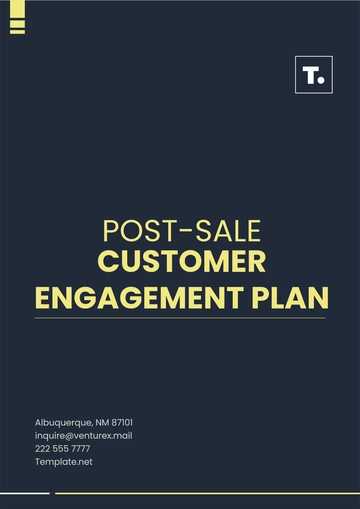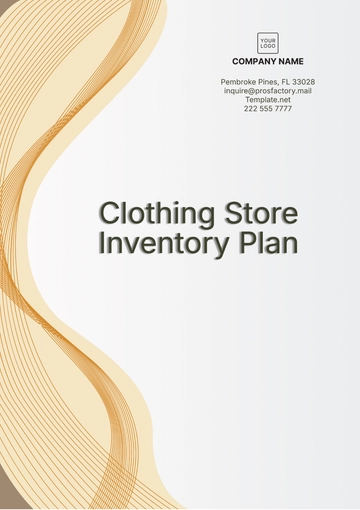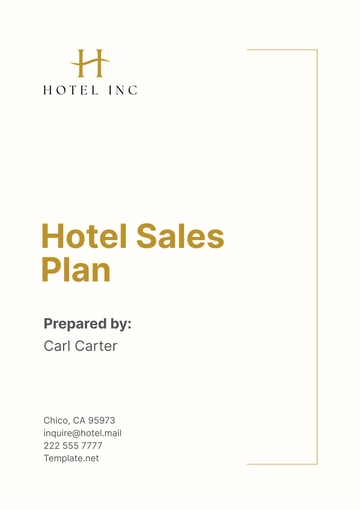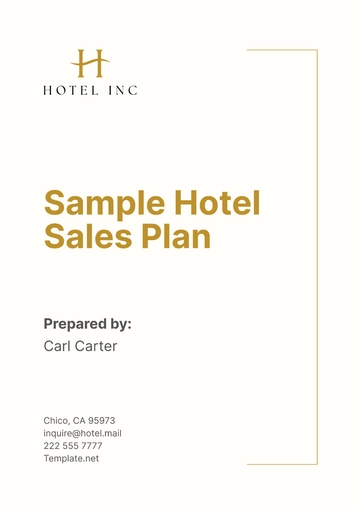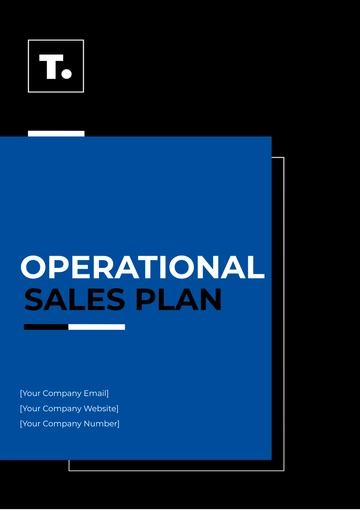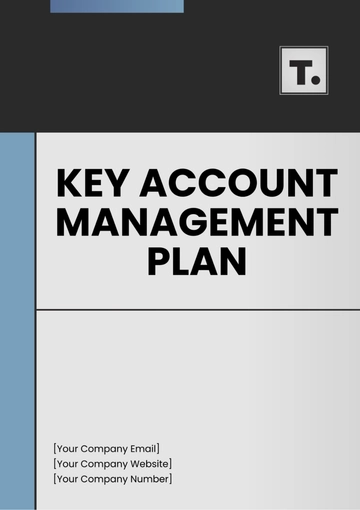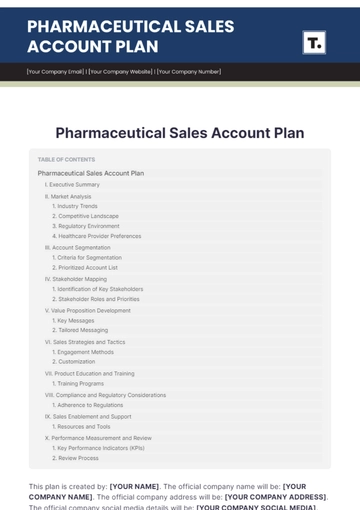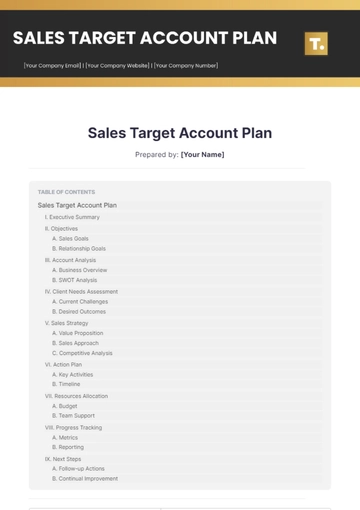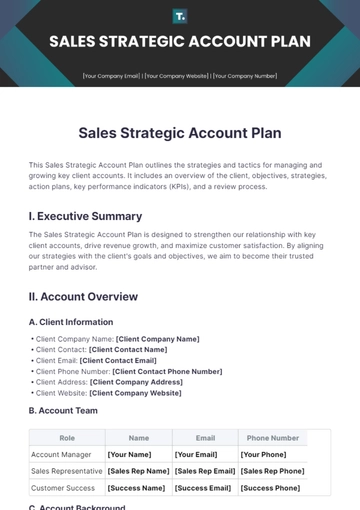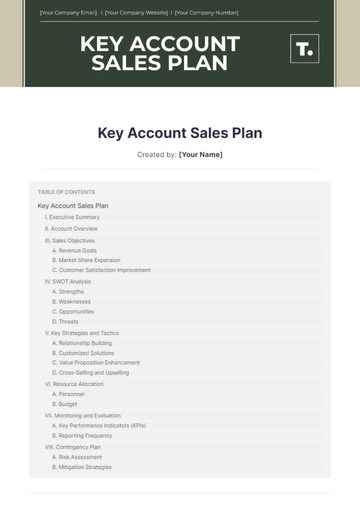Free Plan for Post-Sale Customer Retention
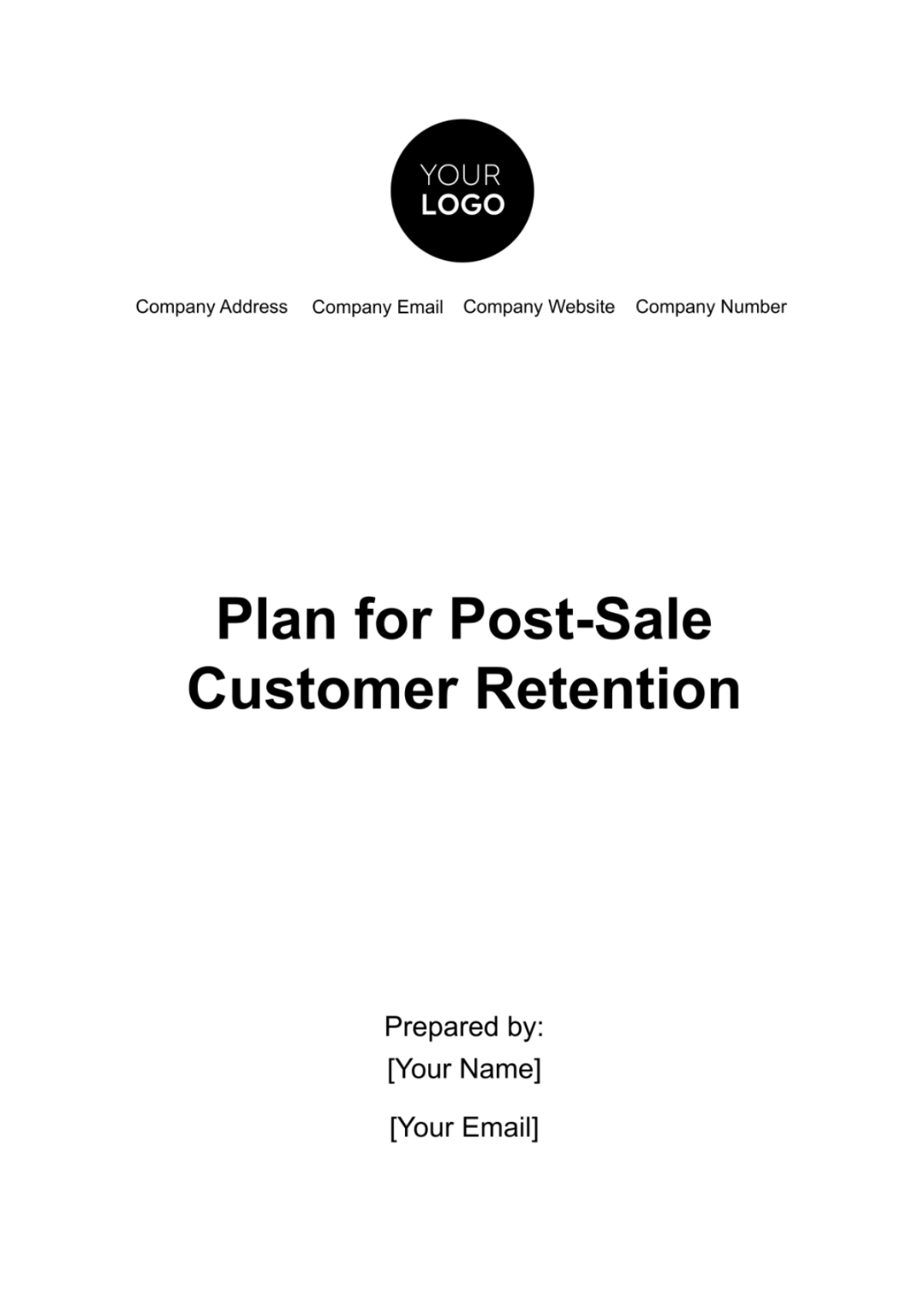
In the bustling world of commerce, the journey doesn't end at the point of sale; it's only the beginning. Customer retention, in the post-sale phase, is not merely a business tactic, but a cornerstone of sustained success. It's the art of nurturing relationships and fostering customer loyalty. In this ever-evolving landscape, where consumers have myriad choices at their fingertips, retaining customers is paramount.
The key components of our post-sale customer retention plan form the bedrock of our strategy for long-term prosperity. Throughout the following pages, we will delve into the intricate details of how to keep your customers satisfied, engaged, and loyal. From understanding customer needs and expectations to the fine art of personalization, building exceptional support teams, and leveraging loyalty programs, we've got it all covered. Join us on this journey to transform one-time shoppers into lifelong advocates, and witness the growth and success that follows.
I. Understanding Customer Needs and Expectations
In the dynamic world of business, forging meaningful connections with your customers is paramount to long-term success. This page delves into the critical aspect of comprehending [Your Company Name] customers' needs and expectations, as well as the strategies to collect and analyze data to guide your efforts.
A. Customer-Centric Approach
Understanding your customers on a deep level is akin to speaking their language. It's not merely about selling products or services; it's about fulfilling their desires and resolving their pain points. To do this effectively, you must adopt a customer-centric approach that places your customers at the center of your business strategy.
Example Scenario: Consider a fictional high-end coffee shop chain, "Bean Haven." They take their customer-centric approach to heart by sending personalized birthday cards with special discounts to their regular customers and conducting periodic surveys to get insights into their coffee preferences.
B. Data Gathering Strategies
Strategy | Details |
|---|---|
Customer Surveys: | Regular surveys are an invaluable tool to gauge customer satisfaction, gather feedback, and identify areas for improvement. These surveys can be conducted both online and offline, making it convenient for customers to provide their insights. |
Example Scenario: | "Bean Haven" sends out quarterly surveys to their loyalty program members. Customers are asked about their favorite coffee blends, the ambiance they enjoy, and their overall experience. By analyzing this data, "Bean Haven" can tailor their menu and services to meet customer preferences. |
Customer Interviews: | Face-to-face or virtual interviews offer a more in-depth understanding of individual customer needs. It's a chance to uncover their unique pain points and expectations. |
Example Scenario: | "Bean Haven" conducts monthly 'coffee tasting events' where select customers get to sample new blends and provide direct feedback. These interviews offer the company insights into the nuances of coffee flavors preferred by their loyal customers. |
C. Data Analytics
Leveraging technology for data analytics is pivotal in the modern business landscape. By collecting and analyzing data from various sources, including customer surveys, purchase history, and social media interactions, businesses can gain actionable insights.
Example Scenario: "Bean Haven" employs advanced analytics tools to study customer purchase patterns and preferences. They use this data to determine which coffee blends are most popular during different seasons and adjust their offerings accordingly.
II. Personalization and Customization
In today's competitive business landscape, personalization has emerged as a powerful tool for retaining customers. It involves tailoring your products, services, and interactions to meet the unique needs and preferences of each individual customer. By recognizing their individuality, [Your Company Name] creates a deeper and more meaningful connection, fostering loyalty and long-term relationships.
A. The Role of Personalization in Retaining Customers:
Personalization plays a pivotal role in retaining customers by making them feel valued, understood, and appreciated. When customers experience a personalized approach, they are more likely to remain engaged and loyal to your brand. It goes beyond addressing customers by their first name in emails; it's about delivering relevant content, products, and experiences that cater to their specific interests and behaviors.
B. Ways to Personalize the Customer Experience:
Strategy | Details |
|---|---|
Segmentation: | Divide your customer base into meaningful segments based on factors like demographics, purchase history, and behavior. This allows you to create tailored marketing campaigns, product recommendations, and communication strategies for each group. |
Product Recommendations: | Implement algorithms that analyze a customer's past purchases and browsing history to suggest products they are likely to be interested in. For example, if a customer frequently purchases workout gear, the system can recommend complementary items like sneakers or gym accessories. |
Personalized Content: | Customize your website and email content to match the customer's preferences. If a customer has shown a preference for specific product categories, ensure that your homepage and newsletters prominently feature those categories. |
Dynamic Pricing: | Adjust pricing or offer exclusive discounts based on a customer's past behavior. This can include special discounts for loyal customers, limited-time offers, or bundling products at a reduced price for those who frequently purchase related items. |
Loyalty Tiers: | Create loyalty tiers that offer different benefits to customers based on their engagement and purchase history. As customers progress through these tiers, they can unlock exclusive perks, such as early access to sales, free shipping, or personalized shopping assistance. |
C. Case Studies Highlighting Successful Personalization Strategies:
Case Study 1: Amazon
Amazon is a prime example of a company that excels in personalization. Their recommendation engine analyzes users' past purchases, search history, and browsing behavior to suggest products with remarkable accuracy. These personalized product recommendations account for a significant portion of Amazon's sales and contribute to their impressive customer retention rates.
Case Study 2: Netflix
Netflix, the leading streaming service, uses personalization to curate content recommendations for each user. By analyzing what users watch and their viewing habits, Netflix ensures that customers are presented with a tailored selection of shows and movies, increasing their satisfaction and retention rates.
III. Timely and Effective Communication
In the world of customer retention, communication is the bedrock upon which lasting relationships are built. To maintain the allegiance of our customers post-sale, understanding the significance of effective communication is paramount. Let's delve into this crucial aspect of our retention strategy, enhanced with fictional details.
Significance of Communication in Customer Retention
Our customers invest not just in our products but in an experience that seamlessly combines technology and lifestyle. We know that for them, the journey doesn't end at the sale; it's an ongoing engagement.
Effective post-sale communication is the bridge that keeps our customers connected to the [Your Company Name]. It serves as a reminder of their decision to choose our brand. When we stay in touch, we're signaling that their journey with us is far from over. This reassurance nurtures a sense of belonging and anticipation, making them eager for the next product launch or update.
IV. Developing a Post-Sale Communication Plan
Let's walk through an example of a post-sale communication plan for [Your Company Name]:
Step | Details |
|---|---|
Welcome Email: | Immediately after a purchase, we send a personalized welcome email. It includes a heartfelt message expressing gratitude for choosing [Your Company Name], provides product setup instructions, and invites customers to join our exclusive online community. |
Regular Product Updates: | Every month, we send product updates via email, showcasing new features, improvements, and offering tips and tricks to enhance the product experience. This keeps our customers excited about their purchase and engaged with our brand. |
Birthday Surprises: | To make our customers feel truly special, we collect their birthdates during the purchase process. When their birthday arrives, we send them an exclusive discount code, making them feel celebrated and appreciated. |
V. Utilizing Email Marketing, Social Media, and Messaging Platforms
In the realm of email marketing, we ensure that our emails are not just promotional but also informative and engaging. We use A/B testing to determine the best subject lines and content that resonate with our audience. Fictional data shows that by optimizing our email campaigns, our open rates have increased by 20% over the past year.
Throughout the year, our email marketing performance experienced significant growth and positive results. In Q1, we initiated A/B testing, leading to a 5% improvement in open rates, which reached 30%. Moving into Q2, open rates continued to rise, hitting 33%, and our engagement rates increased by 10% compared to Q1. This growing trend extended into Q3, with open rates reaching 35% and conversion rates seeing a 7% boost, demonstrating the link between engagement and sales.
By Q4, our email marketing efforts were at their peak, achieving an impressive 40% open rate. This not only marked a 10% increase from the beginning of the year but also contributed to substantial revenue growth, with sales attributed to email marketing surging by 25% in Q4 compared to the previous year. These quarterly milestones reflect the success of our strategic email marketing approach and the direct impact it had on customer engagement and revenue generation throughout the year.
In summary, our year-long focus on A/B testing, content optimization, and timely communication led to a steady increase in open rates and engagement, culminating in a remarkable 40% open rate and substantial revenue growth in Q4. These results validate the effectiveness of our email marketing strategy in retaining and engaging our customers.
VI. Building an Exceptional Customer Support Team
In this section, we'll delve into the essential aspects of establishing and maintaining an exceptional customer support team.
A. Highlight the value of a dedicated customer support team:
A dedicated support team is not just a cost center but a vital asset that directly impacts customer retention and satisfaction. This is achieved through:
A culture of customer-centricity: The company instilled a culture where every employee, from the CEO to the newest hire, values and prioritizes customer satisfaction. This commitment is reflected in their product development, service quality, and problem-solving processes.
Real-time assistance: The company ensures that customers have access to immediate support through multiple channels, including phone, email, live chat, and a knowledge base. This dedication to responsiveness builds trust and keeps customers coming back.
B. Hiring, training, and retaining skilled customer support agents:
The success of a customer support team hinges on the individuals that make up the team. The hiring, training, and retention strategies are pivotal:
Rigorous hiring process: Employing a stringent selection process to identify candidates with strong communication skills, empathy, and a genuine passion for helping customers.
Comprehensive training: Once onboarded, support agents go through a structured training program that not only imparts technical knowledge but also emphasizes soft skills and customer empathy. Continuous learning and skill enhancement are encouraged through workshops, seminars, and access to online resources.
C. Strategies for handling customer issues and inquiries:
Active listening: Support agents are trained to actively listen to customer concerns, seeking to understand the problem fully before proposing solutions. This approach ensures that customers feel heard and valued.
Empowering agents: Support agents are empowered to resolve common issues on the spot, avoiding the need to escalate problems. This efficiency minimizes customer frustration and enhances the overall experience.
VII. Loyalty Programs and Incentives
In the fiercely competitive world of retail, customer loyalty is a coveted treasure. To foster lasting relationships and retain our valued customers, we will introduce a cutting-edge loyalty program that goes beyond traditional discounts and rewards. Our loyalty program, "Preferred Perks," will offer an array of personalized benefits, making each customer feel like a VIP.
A. Designing and Implementing Effective Loyalty Programs
"Preferred Perks" will be a multi-tiered loyalty program designed to cater to different customer segments. The program will have three tiers: Silver, Gold, and Platinum. Customers will automatically start at the Silver level and can progress to higher tiers based on their purchase history and engagement with our brand.
Here's a breakdown of the tiers and their associated benefits:
Loyalty Tier | Purchase Threshold | Benefits |
|---|---|---|
Silver | [Amount] | Exclusive access to member-only events; birthday discounts; early access to new product releases; monthly newsletter with special offers |
Gold | [Amount] | 5% cashback on every purchase; free express shipping on all orders |
Platinum | [Amount] | All Silver and Gold benefits; 10% cashback on every purchase; complimentary product of the month; dedicated 24/7 customer support |
These incentives are designed to motivate and reward customers, ensuring they stay engaged and committed to our brand.
VIII. Feedback and Continuous Improvement
A. Strategies for Gathering and Analyzing Customer Feedback
To gather feedback effectively, here are multiple strategies:
Customer Surveys: They conduct post-purchase surveys to collect insights into product satisfaction, shipping experiences, and overall satisfaction.
Product Reviews: Encouraging customers to leave product reviews, which serve as a valuable source of feedback for potential buyers.
Social Media Monitoring: Their dedicated social media team keeps a close eye on customer comments and messages, addressing concerns and gathering insights for further improvements.
Contact Center Insights: Customer support team is trained to extract valuable feedback during interactions, which are then shared with the product development team.
Data Analytics: By leveraging advanced analytics tools, the company can analyze patterns in customer behavior, identifying trends, and issues in real-time.
B. Using Feedback to Improve Products and Services
Product Refinement: If customers consistently express concerns about a specific product feature, the design team should take swift action to refine or upgrade it.
Process Optimization: Feedback related to shipping times, returns, or website navigation leads to continuous process optimization.
Tailored Recommendations: Using data-driven insights, the company customizes product recommendations for each customer, enhancing their shopping experience and increasing the likelihood of repeat purchases.
Communication Updates: Feedback about communication preferences can lead to diversify their messaging channels. Customers can now choose between email, SMS, or app notifications to receive updates about new arrivals and promotions.
- 100% Customizable, free editor
- Access 1 Million+ Templates, photo’s & graphics
- Download or share as a template
- Click and replace photos, graphics, text, backgrounds
- Resize, crop, AI write & more
- Access advanced editor
Enhance customer loyalty and retention with the Plan for Post-Sale Customer Retention Template, available on Template.net. This template is now customizable and editable using an Ai Editor Tool should help empower anyone to strategically map out post-sale initiatives, ensuring a lasting connection with clients. Elevate your customer retention efforts and maximize sales with this invaluable template.
You may also like
- Finance Plan
- Construction Plan
- Sales Plan
- Development Plan
- Career Plan
- Budget Plan
- HR Plan
- Education Plan
- Transition Plan
- Work Plan
- Training Plan
- Communication Plan
- Operation Plan
- Health And Safety Plan
- Strategy Plan
- Professional Development Plan
- Advertising Plan
- Risk Management Plan
- Restaurant Plan
- School Plan
- Nursing Home Patient Care Plan
- Nursing Care Plan
- Plan Event
- Startup Plan
- Social Media Plan
- Staffing Plan
- Annual Plan
- Content Plan
- Payment Plan
- Implementation Plan
- Hotel Plan
- Workout Plan
- Accounting Plan
- Campaign Plan
- Essay Plan
- 30 60 90 Day Plan
- Research Plan
- Recruitment Plan
- 90 Day Plan
- Quarterly Plan
- Emergency Plan
- 5 Year Plan
- Gym Plan
- Personal Plan
- IT and Software Plan
- Treatment Plan
- Real Estate Plan
- Law Firm Plan
- Healthcare Plan
- Improvement Plan
- Media Plan
- 5 Year Business Plan
- Learning Plan
- Marketing Campaign Plan
- Travel Agency Plan
- Cleaning Services Plan
- Interior Design Plan
- Performance Plan
- PR Plan
- Birth Plan
- Life Plan
- SEO Plan
- Disaster Recovery Plan
- Continuity Plan
- Launch Plan
- Legal Plan
- Behavior Plan
- Performance Improvement Plan
- Salon Plan
- Security Plan
- Security Management Plan
- Employee Development Plan
- Quality Plan
- Service Improvement Plan
- Growth Plan
- Incident Response Plan
- Basketball Plan
- Emergency Action Plan
- Product Launch Plan
- Spa Plan
- Employee Training Plan
- Data Analysis Plan
- Employee Action Plan
- Territory Plan
- Audit Plan
- Classroom Plan
- Activity Plan
- Parenting Plan
- Care Plan
- Project Execution Plan
- Exercise Plan
- Internship Plan
- Software Development Plan
- Continuous Improvement Plan
- Leave Plan
- 90 Day Sales Plan
- Advertising Agency Plan
- Employee Transition Plan
- Smart Action Plan
- Workplace Safety Plan
- Behavior Change Plan
- Contingency Plan
- Continuity of Operations Plan
- Health Plan
- Quality Control Plan
- Self Plan
- Sports Development Plan
- Change Management Plan
- Ecommerce Plan
- Personal Financial Plan
- Process Improvement Plan
- 30-60-90 Day Sales Plan
- Crisis Management Plan
- Engagement Plan
- Execution Plan
- Pandemic Plan
- Quality Assurance Plan
- Service Continuity Plan
- Agile Project Plan
- Fundraising Plan
- Job Transition Plan
- Asset Maintenance Plan
- Maintenance Plan
- Software Test Plan
- Staff Training and Development Plan
- 3 Year Plan
- Brand Activation Plan
- Release Plan
- Resource Plan
- Risk Mitigation Plan
- Teacher Plan
- 30 60 90 Day Plan for New Manager
- Food Safety Plan
- Food Truck Plan
- Hiring Plan
- Quality Management Plan
- Wellness Plan
- Behavior Intervention Plan
- Bonus Plan
- Investment Plan
- Maternity Leave Plan
- Pandemic Response Plan
- Succession Planning
- Coaching Plan
- Configuration Management Plan
- Remote Work Plan
- Self Care Plan
- Teaching Plan
- 100-Day Plan
- HACCP Plan
- Student Plan
- Sustainability Plan
- 30 60 90 Day Plan for Interview
- Access Plan
- Site Specific Safety Plan







